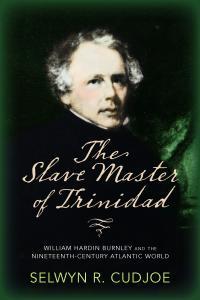How Our Banking System Dis-serves the Poor
By Dr Selwyn R. Cudjoe
January 02, 2020
The issuance of the polymer $100 bill and the hardships it caused many citizens should make us realize how the banking system discriminates against the poor and looks down on them for having created an alternative financial system that serves their needs.
The Trinidad Express, in an insightful editorial, offered a useful history of banking in this country. It cautioned: "It is in the interest of the national economy and social harmony that policy makers and bankers understand T&T's culture of savings and design instruments appropriate to them instead of demeaning them and pushing them underground." (December 19).
While the Express attributes the exclusion of the West Indian masses from the banking system to the elitism of the dominant class, I argue that the banking system was not created to serve the needs of the poor. It was established primarily to facilitate the financial activities of the planter class.
The compensation that was paid to the former slave masters introduced more money into the banking system. As more wage workers entered into the economy there was a greater need to strengthen the banking system (hence the establishment of the Colonial Bank in 1837) to facilitate a smoother transition from an economy based primarily on allowances (paid to the enslaved) to one based on wages to the freed blacks.
C. A. Calvert, secretary of the Court of Directors of the Colonial Bank, warned William Rennie, manager of the Trinidad branch of the bank: "It will be necessary in the first instance to divest yourself of the idea of supplying what are called 'the wants of the community' or of completely filling the void occasioned by the fall of the West India Bank" (Margaret Rouse-Jones, The Colonial Correspondence, 1837-1885).
On June 1, 1850, the Legislative Council met to consider the introduction of smaller coins into the financial system to facilitate transactions of "the lower order." The larger coins, the stampee or black dog and the quarter franc pieces in existence were not adequate to the needs of their transactions. The government, therefore, sought to introduce smaller coins, the coppers, to pay salaries and to facilitate market transactions.
Initially, the planters were skeptical of the use of the coppers (farthings, cents and pennies) into the financial system. William Burnley, head of the planter class, thought it unwarrantable and impudent of the banks to force these coins on the public.
He argued that the introduction of the coppers "had no other object in mind than to sweep away our Mexican dollars, they had gone down with the doubloons and other gold pieces, as to monopolize the currency of the island." Rennie, an unofficial member of the Legislative Council, disagreed with Burnley. He encouraged "throwing into circulation a description of coins which in other British colonies were much valued, and had always answered the wants of the laboring population" (Trinidadian, June 3, 1850). He assured the Council the copper "would create confidence, allay the alarm in the community, and the petty shopkeeper would not hesitate to take it."
Ultimately, Burnley gave way to those who favored the introduction of smaller coins. He admitted "the copper coins now introduced were quite small enough to enable the lower classes to obtain the minutest requisite, and would be the smallest article of consumption which the smallest appetite could think necessary.
"It only remained to do something to prevent any practical inconvenience in the higher classes, and that is to be done by limiting the circulation of British silver" (Trinidadian, August 24.) The British silvers consisted of the twelve (1 shilling), twenty-four (2 shillings), and sixty (1 crown) pence coins.
The introduction of the copper brought the poorer classes into the economy and, to that degree, acknowledged their importance to the economic life of the community. Since the official banking system never catered to their economic needs, the poor created their own system which, according to Asha Javeed, has grown to be about 30 percent or about $47 billion dollars of T&T's real Gross Domestic Product.
When yours truly left for the United States in 1964, it was my mother's sou sou hands that allowed me to do so. When my uncles and cousins played whe whe, it was another means of generating some cash to deal with the demands of the day. Although I had a small savings account at the Cooperative Bank in Port of Spain, I never had a checking account until I arrived in the US.
In order to survive, the poorer classes turned to their own ingenious means of savings to facilitate their growth. It is unfortunate that contemporary bankers should speak disparagingly of their historic modes of savings. It tells us how little we have learned from our past and the desire of the rich and powerful to freeze poor people into the same exploitative relationship they cultivated with our forefathers and foremothers.
The banks still cater to the needs of the rich and continue to dis-serve the poor. Five years ago I tried to borrow $250,000 (TT) to purchase a plot of land in my village. Although I had sufficient collateral, I spent a month running from one bank to another which was futile in the end. It was a waste of my time and energy.
I applaud the Express for shining a light on the dark corners of our banking system and its advice that the latter improve its service to the poor. Our scholars need to examine the origin of this historic injustice which I try to do in my book, The Slave Master of Trinidad.
Professor Cudjoe's email address is scudjoe@wellesley.edu. He can be reached @Professor Cudjoe.
Share your views here...

The Slave Master of Trinidad by Dr. Selwyn R. Cudjoe
|

